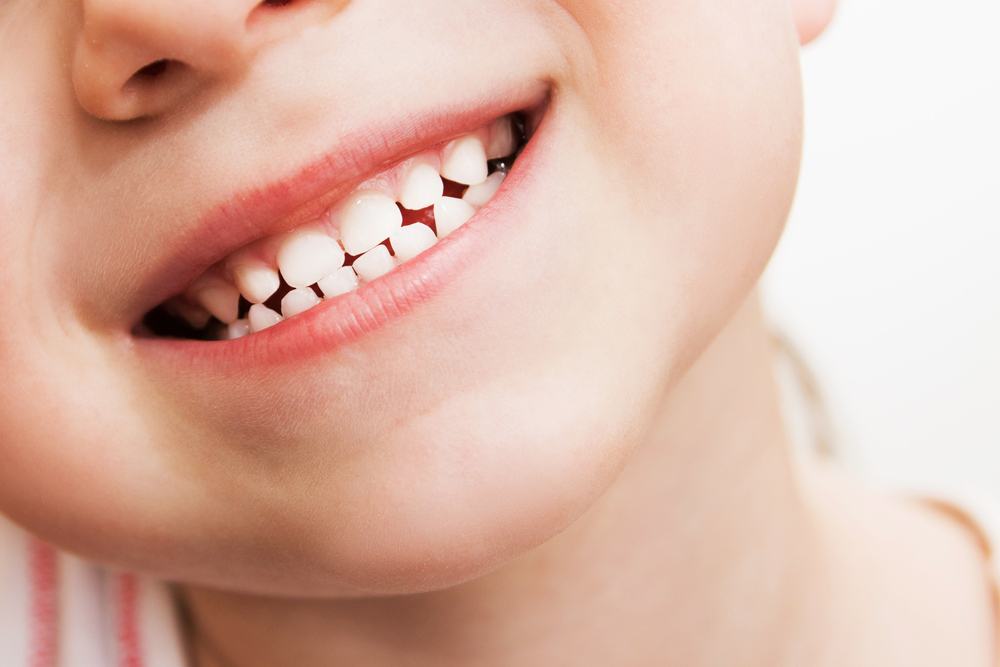Space Maintainers and Permanent Teeth
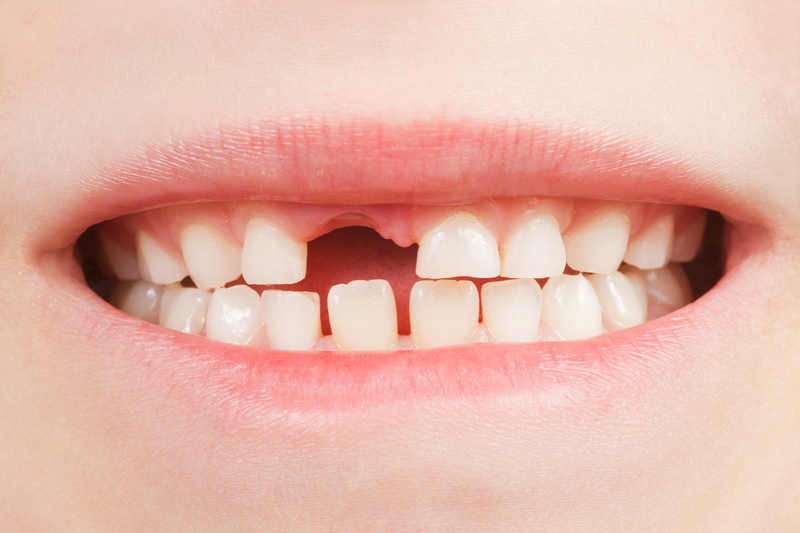
Whenever a child loses a tooth prematurely, a space maintainer may be needed to keep the space open so the permanent tooth can grow in correctly. Losing a baby tooth is a natural occurrence, but some baby teeth must be extracted due to dental decay. A space maintainer is a custom-made appliance that helps permanent teeth grow in correctly and prevent future oral health complications. If you are worried about the gap in between your child’s teeth, learn how a space maintainer can keep your child’s teeth straight and allow for proper tooth development!
Why Baby Teeth Fall Out Prematurely
Most children get their first full set of baby teeth by the age of 3, and these help them eat their food while serving as placeholders for their future permanent teeth. Occasionally, baby teeth are lost prematurely or permanent teeth erupt later than they should, so space maintainers have become a popular way to support the child’s mouth until the gaps are filled with permanent teeth. There are many reasons why children lose their baby teeth earlier than expected. For one, some experience trauma to the mouth, such as tripping or getting hit in the mouth with some object. Others lose teeth due to “baby bottle decay,” which occurs whenever a child falls asleep at either breast or bottle, or walks around with a bottle for large amounts of time. The sugar content in the milk causes enamel to decay and cavities to appear, which can lead to premature tooth loss. Genetic influences can also affect whether permanent teeth develop or not, which can leave gaps in the mouth. Although rare, some children suffer from oral infections that are severe enough to cause tooth loss, but this is not as common as an injury or baby bottle decay. Even though losing baby teeth prematurely is not inherently bad, the consequences of not having a tooth in the space where a permanent tooth will eventually erupt can cause some complications with malocclusion that will need orthodontic care later on. Space maintainers provide the mouth with the proper space for permanent teeth to erupt into while ensuring that other teeth do not crowd that area until the tooth develops.
How Space Maintainers Help
Space maintainers basically “hold space” for permanent teeth once a baby tooth has been lost prematurely. When adult teeth are ready to come into the mouth, there may not be enough room because of the lost space. For this reason, dentists recommend space maintainers to hold open any spaces left by the missing tooth. These devices are typically made of acrylic, with loops and bands made of steel wire to hold them in position. Space maintainers ensure that your child develops their permanent teeth in the right locations while giving support to the surrounding teeth. Teeth are notorious for moving or becoming loose without the support of surrounding teeth, so space maintainers also help other teeth stay in their proper places and not move into the gaps where the missing teeth were once located. Space maintainers aren’t for everyone, though. If your child loses a baby tooth shortly before a permanent tooth is expected to develop, a space maintainer isn’t necessary. For those patients whose permanent teeth won’t be developing for an extended amount of time, space maintainers come in handy to guide those teeth into proper alignment whenever they do erupt.
Type of Appliances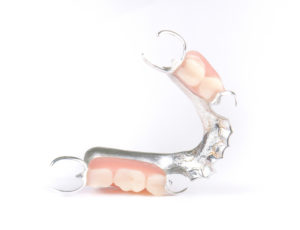
For those who choose space maintainers, they come in two different options: removable and fixed. Removable devices are made of acrylic and use artificial teeth to hold open the spaces. These are ideal for older children who are capable of removing and cleaning them on their own. For children with several missing teeth, partial dentures are another option to maintain the spaces in the mouth. Fixed maintainers are attached with dental cement to the teeth beside the gap. These are helpful for young children or those who have lost back teeth. Fixed retainers can be fitted on the upper or lower jaw to maintain space for front or back teeth. The device that your child will be given will depend upon the number and location of missing teeth in their mouth, but age is also considered, as well.
There are quite a few different options to choose from if your dentist recommends a fixed maintainer for your child. Some of the most popular options include:
- Lingual holding arch: Used to maintain space for lower back teeth on both sides.
- Band-and-loop device: Recommended when one or more baby molars are lost in one dental arch. Stainless steel wire that is held in place by orthodontic bands that allows the permanent tooth to erupt without blocking it.
- Distal shoe appliance: Fitted over the baby first molar and maintains the space for the permanent molar once the tooth is lost.
- Transpalatal arch: Fitted on the upper jaw to preserve space on both sides of the dental arch. Held in place by wire fastened around the surrounding teeth.
Each of these devices are custom-made to fit to your child’s mouth. The dentist will take impressions of your child’s teeth, then send that impression to the dental laboratory to create the appliance.
Advantages of Child Orthodontics
With the modern technology and tools that are available to dental patients, child orthodontics has become more popular and necessary to maintain the oral health of young kids. Especially if your child loses a baby tooth prematurely, visiting with an orthodontist early on can help detect hidden dental issues, observe the progress of incoming teeth, decrease the risk for permanent tooth extractions and guide incoming teeth into their ideal positions.
If your child is in need of a space maintainer or is having issues with crowded teeth, call Belmar Orthodontics at (303) 225-9016! Our team is dedicated to your oral health and is ready to help your family get the beautiful smile that they deserve!
Orthodontic Appliances Your Child Might Need

As orthodontic technology has improved throughout the years, so have the different appliances that are used to treat children with braces. Depending on their jaw and bone structure, your child may need an orthodontic device to help guide their teeth and jaw into proper alignment. These orthodontic appliances are used to maintain space in the mouth and allow for proper tooth eruption and movement. Find out what types of appliances are available and which is best for your child’s needs through these tips!
Benefits of Child Orthodontics
Many, if not most, dental patients will receive some form of orthodontic treatment during their lifetime. Even if one’s teeth doesn’t show any kind of orthodontic issues, it is advantageous that patients, especially children, visit with an orthodontist to maintain good oral health. The American Association of Orthodontics recommends that children have their first orthodontic visit between the ages of 7 and 8 to prevent the progression of any orthodontic issues that may already be developing. Orthodontic treatment can lead to healthy, beautiful smiles at any age, but is most beneficial when completed at an earlier age. Some benefits of visiting the orthodontist early on include observing the progress of incoming teeth, reducing the risk of impacted teeth, and monitoring facial and jaw development. Early orthodontic evaluations can discover hidden dental issues and decrease the risk for permanent teeth extractions, as well. Early detection of any dental issue is vital in maintaining good oral health for patients of all ages, and should be a goal that all children should obtain from an early age.
Types of Appliances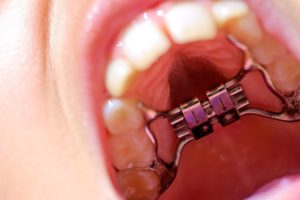
Whenever patients think of “orthodontia,” they typically think of braces. For young patients, braces are common orthodontic appliances that they can receive to straighten their teeth and correct any dental issues. Child orthodontics includes other appliances than just braces, though, and these appliances fulfill an important function in your child’s overall treatment. Orthodontic appliances change the way your child’s mouth works by correcting certain bone problems. Headgear, for example, guides the jaw into the proper direction by holding the upper jaw until the lower jaw can catch up with it. Retainers are other useful tools that keep teeth in the correct position after braces are removed, and most children will use some type of retainer during or after their treatment.
There are other orthodontic appliances that aren’t as well known but are used quite often in child orthodontics. The Nance “Button” is one of those appliances that uses a holding arch to maintain space in the mouth for children who have lost their baby teeth and are waiting for permanent teeth to grow in. If baby teeth are lost prematurely, the first molars might move forward into an incorrect position as they erupt because there is nothing holding them back. The Nance is an acrylic plate (the button) that covers a section of the palate with two metal bands around the back teeth to hold them into position until permanent teeth develop. This process helps maintain the proper space for permanent teeth to grow into. Another less-known appliance is the lower lingual holding arch, which does the same thing as the Nance but for the lower teeth. Two metal bands are cemented to the lower molars, joined by a U-shaped bar that rests behind the lower teeth. This keeps the back teeth from moving forward and maintains the space needed for future permanent teeth to erupt. Lastly, twin blocks are used to correct misalignments in the jaw that cause your child’s top teeth to stick out in front of the lower teeth further than normal. The blocks consist of two plates, one on the upper teeth and the other on the lower. These work together to bring your child’s lower jaw forward into the correct position, but is most successful when inserted while your child’s bones are still growing. They are the fastest-working appliances, and create quick results. Any of these appliances can be used in your child’s orthodontic treatment, so if you have questions about how they function or which one would be best to implement, make sure to ask your orthodontist.
What To Expect At The First Appointment
Most adult teeth erupt between the ages of 6 and 12, so whenever your child’s first permanent molars begin developing, the dentist will need to evaluate them to see how they work together. This process is called a “bite check,” and it helps orthodontists determine in what stage your child’s teeth are and what their treatment will require. The dentist will then decide which type of appliance would work best for your child and what instructions they will need to follow to get the best results out of their treatment. When using an orthodontic appliance, good oral hygiene will be necessary to prevent plaque buildup and other dental complications that could extend your child’s treatment time. Having your child brush and floss their teeth every day, along with cleaning whichever orthodontic appliance they’re given, will ensure that they get the healthiest and fastest treatment possible.
If your child is due for an orthodontic visit, or if they’re experiencing any of the orthodontic issues that we’ve discussed, call Belmar Orthodontics at (303) 225-9016 for a consultation to improve their oral health. Our dedicated team is ready to help you create a plan for your child to get them the smile that they deserve!
How Upper Jaw Expansion Can Benefit Your Child
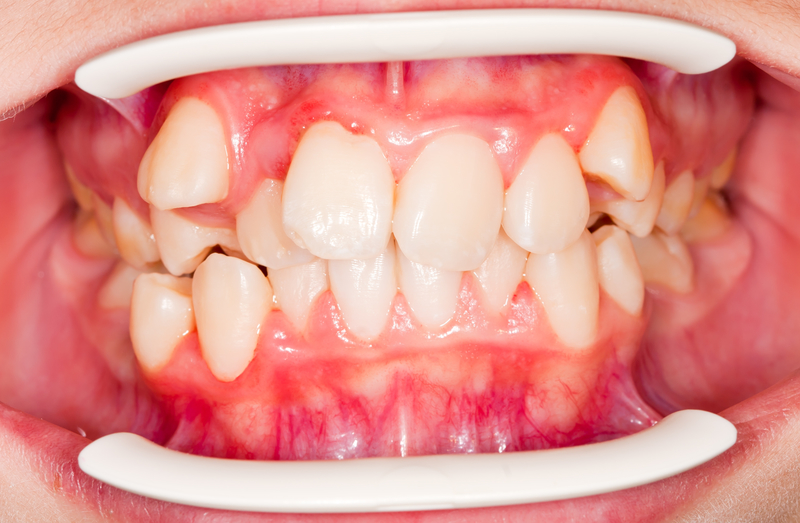
Upper jaw expansion is an orthodontic treatment that creates more space growth for developing kids by widening the circumference of the palate. This procedure helps correct crossbites, reduces overcrowding, and improves breathing ability. Most adolescents will receive this treatment before 16 years of age, but adults can also expand their upper jaw, if needed, as well. Read on to find out how upper jaw expansion works and what the advantages are with these tips!
Jaw Positioning and Malocclusion
Many patients deal with malocclusion, or crooked teeth and a poor bite. A poor bite refers to the way the upper and lower teeth line up, which is affected by the structure of the jaw. A “normal bite” consists of the upper teeth sitting slightly forward of the lower teeth, which allows for proper movement. Malocclusion is normally a cosmetic problem, but when it interferes with how teeth erupt, it can cause crooked teeth and tooth decay. A common cause of malocclusion is having too much or too little room in the jaw, which affects whether teeth grow in crowded or crooked. The shape and size of the jaw can also affect how severe someone’s malocclusion is, but thumb-sucking and tooth loss can also influence this process. For many patients, especially children, malocclusion is caused by a limited amount of space in the mouth for teeth to grow, so they either grow in crooked or the bite is altered. For this reason, many young dental patients receive upper jaw expansion treatments to allow more room in the mouth and prevent malocclusion. As more study and insight has been gained on the structure of the mouth, there are now more possibilities to fix incorrect bites, adjust occlusion and prevent crooked teeth starting from an earlier age.
Reasons For Upper Jaw Expansion
Upper jaw expansion is a specific treatment for widening the circumference of the palate to increase the perimeter of the dental arch in the mouth, which creates more space for teeth to grow. When there is enough room for teeth to grow, they are more likely to develop correctly. During childhood, palatal or maxillary expanders are used to aid this process. Through these expanders, dentists can help correct a crossbite that is caused by malocclusion. Normally, the upper teeth should close around the outside of the lower teeth, but when someone has a narrow palate, the opposite can occur and create a crossbite. As the upper teeth bite inside the lower teeth, an asymmetrical growth of the lower jaw can develop and change the symmetry of one’s face. This can cause serious complications if not addressed early on. Lastly, upper jaw expansion methods improve breathing ability, which is greatly affected by a narrow jaw. A narrow or deep upper jaw can make it difficult for a child to breathe through their nose and results in constant mouth breathing. While it doesn’t sound very serious, consistent mouth breathing keeps the mouth open at night, allowing for unfiltered bacteria to enter into the oral cavity, causing dry mouth and halitosis (bad breath).
Treatment Options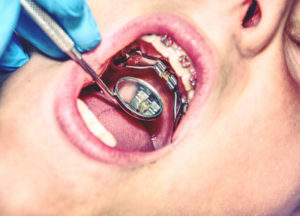
Upper jaw expansion is most successful when done at an earlier age while the mouth is still developing. For adults, those with a crossbite may only need a dental expansion instead of a palatal expansion, but may need surgery if palatal expansion is required to fix concerns. Depending on the age of the patient and the reason for treatment, a rapid palatal expander (RPE) may be used to increase the width of the jaw. The RPE is attached to the upper molars by bonding or cemented bands, and uses a special key that is used to widen the space by turning a screw in the appliance at certain points in time. This process puts extra pressure on the two halves of the upper jaw, which causes extra bone to grow between them. Gradually, by turning the screw with the key each day, the jaw widens to make room available for developing teeth. For adults, removable expanders can be used, as well, whenever the degree of expansion is minimal. Resembling a partial denture, removable expanders are typically made of chrome and recommended for adults as they more easily comply with treatment. After treatment, an orthodontic retainer may be given to maintain the space until all permanent teeth have developed. A third but least common option for expansion is a surgically assisted rapid palatal expander (SARPE), which is a combination of orthodontic treatment and surgery. This is used in the case that expansion cannot be achieved by the appliance alone. A custom appliance is made before surgery, and while during surgery, the upper jaw is intentionally fractured to separate it into movable sections. This allows the bone to grow between the fractures after the appliance is inserted.
Pros and Cons
Palatal expanders help straighten teeth, improve breathing and fix incorrect bites, but there are important suggestions to make note of. Since children are most likely to have one, a palatal expander, just like any orthodontic appliance, needs to be thoroughly cleaned each day to prevent plaque buildup and decay around the teeth. For young children, this can be difficult to do without help and can be easily overlooked, so parental supervision is essential. Additionally, the entire process can cost up to $3,000, depending on the degree of correction. For many, there is also some minor discomfort during expansion, but it is well worth it when you’re avoiding an inaccurate bite later in life.
For more information on which treatment option is best to fix yours or your child’s palate, call Belmar Orthodontics at (303) 225-9016! Our experienced team is dedicated to improving your oral health and getting you the smile that you deserve!
Diastema: What Is It?

A gap between the teeth, called “diastema,” are common among many dental patients and can be found between any teeth in the mouth, but usually between the two upper front teeth. Why do these spaces develop, and what are the differences between a diastema in children versus adults? Diastemata develop through a variety of reasons, such as misaligned jaw bones, missing teeth, and thumb-sucking. Not all spaces can be prevented, but many can be adjusted through orthodontic treatment. If you have a diastema that you would like to have treated, learn what your treatment options are through this guide!
Changes in Orthodontic Care
Orthodontic treatment options have been revolutionized through modern technology and dental science. Poorly aligned teeth have been a nuisance for dental patients for hundreds of years, and orthodontic work was even performed on willing subjects dating back to the ancient Egyptians and the Romans. From crude metal bands to catgut, archaeologists have discovered that even ancient societies performed orthodontic care on patients in an effort to straighten teeth. For those suffering from malocclusion, or misalignment, a common practice for moving emerging teeth into their correct position was by regularly pushing them with the fingers, a practice that has long been outdated since the invention of custom-fit metal appliances in the 18th century. Eventually, orthodontics treatment evolved into the process that we see today: brackets being cemented to each individual tooth with a metal wire attached to cinch the teeth together. Options for invisible treatments, such as lingual braces or even Invisalign, further allow patients to choose how they straighten their teeth. While there are so many options to choose from to decide how to straighten our teeth, how our teeth first develop and erupt in our mouth is a separate process. Since every patient is different and will experience a variety of dental issues, some patients may face something called “diastema,” which can have certain dental complications and be caused by a variety of reasons. Understanding how diastemata form and what you can do to fix them can give you the freedom to be in control of your oral health and appearance.
Gaps Between Teeth
Many people across the world are born with a diastema, or a gap between their teeth. These spaces can form anywhere in the mouth, but are most commonly found between the two upper front teeth. Both children and adults can have a diastema, and many times a child’s diastema will disappear once their permanent teeth grow in. While some gaps are relatively small and barely noticeable, others can be quite large and can cause cosmetic issues for some patients. While relatively harmless, most patients who fix their diastema do it for aesthetic reasons.
There are a variety of reasons why a diastema develops. A mismatch between the size of the jawbone and the size of teeth that develops can cause gaps to appear, or even too small of teeth (or a missing tooth) can create spaces, as well. Sometimes a diastema can be caused by an oversized labial frenum. This part of the mouth is a piece of tissue that extends from the inside of your upper lip to the gum just above your upper front teeth. Occasionally, this will grow too much and pass between the two front teeth, causing a gap. Bad habits, such as thumb sucking, can also lead to gaps between the teeth as the movement of the thumb tends to push teeth forward, creating a gap. A diastema can also develop due to incorrect swallowing reflexes. Normally, the tongue will push against the roof of the mouth when swallowing, but some people’s tongues may push against the teeth, which causes separation. This is called a tongue thrust. Lastly, gaps can form from periodontal disease in which inflammation damages the gums and teeth, which can cause teeth to loosen and fall out, or decay.
Treatment Options
A diastema can result from a mixture of orthodontic problems, or it can develop on its own. Many people who fix the gap in their teeth do it for appearance, but for those patients who have missing teeth, they might need to have a dental implant or bridge inserted. More often than not, braces are needed to close the gap between teeth, no matter where the gap is located. Fixing a diastema affects the entire mouth structure, so braces will be installed on both the top and lower teeth for proper alignment. If your diastema is due to an oversized labial frenum, a frenectomy will be performed to help the gap close on its own. If there is any sign of gum disease, periodontal treatment will be needed first to restore gum health before any braces will be put on. See open bite symptoms and causes.
Keeping The Gap Closed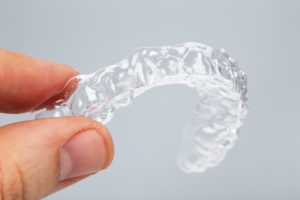
Spaces will tend to stay closed when done through orthodontic or dental repair. To prevent any gaps from developing in the future, make sure to wear your retainer that you will receive after treatment and use it according to your orthodontist’s instructions. For extra protection, your orthodontist might also splint (attach) the backs of the teeth to other teeth with composite and a wire to prevent them from moving. If you notice a space between your teeth or in your child’s mouth, contact your dentist for an evaluation to determine what kind of orthodontic treatment you might need. For more information on how to fix a diastema and improve your oral health, call Belmar Orthodontics at (303) 225-9016 to start improving your smile today!
Does Your Child Really Need Braces?

We typically get our braces put on during our teenage to adult years, but how do you know whether your young child should have braces or not? Child orthodontics is a common practice for those children struggling with crooked, overlapping, or overcrowded teeth, or a misaligned jaw. There are many advantages for children as they receive braces earlier on in life as it can prevent future orthodontic treatment and guide incoming teeth into the proper position. Learn how to recognize whether your child needs braces through these tips!
When To Start
Young kids go through a lot of physical changes during adolescence, and some of those changes include jaw and teeth development. Orthodontics has become more and more common in young children to adjust certain orthodontic issues that occasionally occur as a child develops. Traditionally, orthodontic treatment begins once a child has lost most of their baby (primary) teeth and a majority of their permanent teeth have grown in, which typically occurs between the ages of 8 and 14. Even though braces is recommended at this age, it is a good idea to get an orthodontic evaluation for your child by the time they turn 7 years old; at this age, an orthodontist is able to detect early symptoms of orthodontic problems, such as an underbite or crossbite, which can cause severe complications and more treatment later on if left untreated at an early age. Bones are still growing during this age, so it is an ideal time to meet with an orthodontist to monitor bone and jaw development while evaluating any apparent orthodontic issues.
Advantages of Child Orthodontics
Although child orthodontics is only necessary if there are physical developmental issues within the mouth, receiving orthodontic treatment as a child has certain advantages. Visiting an orthodontist at an early age allows for observation of incoming teeth and reduces the risk of impacted teeth as your child loses their baby teeth and their permanent teeth take their place. As the orthodontist monitors your child’s teeth, they can help guide their teeth into the correct position as soon as they begin erupting, usually through braces or other orthodontic devices that help move teeth into the correct positions. Regular orthodontic visits also decrease the risk of hidden dental issues and permanent tooth extractions, as it allows for the orthodontist to adjust the jaw so that teeth crowding doesn’t occur.
Child orthodontics doesn’t always imply braces. Since a child’s jaw and teeth are still growing, many orthodontic issues, such as crowding, can be addressed before complications occur later on during adolescence. In this case, orthodontic treatment in young children is known as interceptive orthodontics. Many times, a child’s dental arch may be too small to fit all of their teeth. Just a few decades ago, it was a common practice to simply remove some permanent teeth to make space in the mouth. Now, though, child orthodontics can avoid this through the use of a palatal expander that expands the child’s upper dental arch, which allows adult teeth to emerge in a better position. Interceptive orthodontics can speed up the process of aligning teeth into the proper position and cause future treatment to be shorter and less involved.
How Much Does It Cost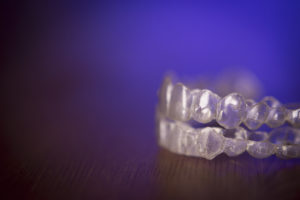
If braces are fit too early on a child, treatment can take longer and be more expensive. For this reason, it’s important to have regular orthodontic visits to monitor tooth and jaw development to ensure that whenever your child receives braces, it’s at the correct time. The braces that your orthodontist recommends will depend on your child’s type of problem that he or she has. There are three types of braces that most children will receive, and they each have different advantages and disadvantages:
- Traditional metal braces – Have steel ties holding the wires between the brackets in place. Cost is driven by what your orthodontist will charge for treatment, including multiple office visits.
- Damon braces – Do not have steel ties, but the brackets themselves hold the wires in place. Typically more expensive and can cost up to $8,000, but you pay for less dental appointments since the braces are self-ligating.
- Invisalign (or other clear or removable aligners) – Fit over the child’s teeth similar to a mouthguard. Your child will receive a number of aligners during the duration of their treatment, so cost is determined by the amount of aligners needed to achieve correction.
Just like adult orthodontics, child orthodontics can cost anywhere between $3,000 and $8,000, depending on what level of correction your child needs. If your child needs to have teeth extracted or be fitted for other appliances, the cost will most likely go up, as well. The way your child complies to orthodontic treatment will also affect the cost. Make sure that they are brushing and flossing everyday so as to avoid tooth decay, which will increase the cost of treatment as your dentist will have to treat around the braces to fix the decay.
Is It Necessary?
As mentioned before, whether your child needs braces or not at an earlier age is dependent upon their mouth structure and how their teeth form. For more information about child orthodontics or if you’re interested in scheduling a consultation, contact Belmar Orthodontics at (303) 225-9016!. Our experienced and highly trained orthodontic staff offers a variety of orthodontic treatments and technology so that you can be confident your children are receiving the best care available.
Fun Facts About Your Teeth
Why are teeth, even baby teeth, so important? And why do we need all of them? Each tooth has an essential function in the mouth and is designed to give you the maximum amount of power to chew, talk and be healthy. The teeth are made up of incisors, canines, premolars and molars all shaped for different functions. We each get two sets of teeth during our lives—baby teeth and adult teeth. Without our teeth, we would have problems with digestion, speech, facial shape, appearance and overall health and wellness. The teeth are vital in the first steps of digestion. Problems with the teeth (such as gum disease) can lead to conditions that affect the health of your mouth and whole body. Taking care of your teeth is more important than you realize. Even having straight teeth can do more for you than you know. At Belmar Orthodontics, let us teach you more about your teeth, the importance of straight teeth and all that they do for you!
Why Are Baby Teeth So Important?
Every single tooth in the mouth is important when it comes to eating, chewing, speaking, digestion, facial shape, appearance and overall health. That even includes the baby teeth even though they are teeth that will eventually fall out. Baby teeth aid in normal development of the jaw when we’re young. This leads to normal development of the jaw through adolescence and adulthood. The American Association of Orthodontics recommends that children have their first orthodontic visit between 7 and 8 years of age. This is a time when orthodontic issues may be present (such as over, under or cross bite) and a time when those problems can easily be corrected.
Baby teeth help maintain space for the permanent teeth that will grow in. They also contribute to speech development (especially the ‘S’ sound) and overall self-esteem. After childhood orthodontics, your child will then receive orthodontic care as an adolescent with a focus on bringing the teeth into proper alignment. Properly aligning the teeth during the adolescent years will ensure:
- There is space for all of the 32 adult teeth in the mouth.
- Those teeth are straightened before the jaw hardens and stops growing and before orthodontic care is much harder to perform (this is usually between ages 13-15 for girls and 16-18 for boys).
- Higher self-esteem and self confidence in home and academic life, which can lead to more confidence and opportunities as an adult.
The Teeth In the Mouth
An adult mouth will typically consist of 32 teeth. There are around 20 baby teeth (10 upper and 10 lower) that will fall out and 32 adult teeth will grow in their place (including the wisdom teeth). Not all people have wisdom teeth and most will have them removed, bringing the final number of adult teeth to around 28 per person. The adult teeth are made up of 8 incisors, 4 canines, 8 premolars and 12 molars (minus 4 if the wisdom teeth are gone). Baby teeth tend to look very similar to one another, but all the adult teeth look different because they have different functions. Some are pointy, some are narrow, and some are large to aid in chewing, eating and speech. The teeth are the first step in the digestive process, as food comes in through the mouth and is chewed before it continues through your body. Having a full set of healthy teeth will aid you in all your chewing and eating needs. Straight teeth make any action involving the teeth that much easier.
The Importance of Straight Adult Teeth
How important are straight teeth in adults? VERY! About ¼ of all patients in the United States with braces consist of adults, and that number is on the rise. Studies have shown that straighter teeth lead to more overall confidence and that confidence can boost a person’s chance of receiving a job over than someone with crooked teeth. In a study by Invisalign (a transparent aligner brand that we offer), they found shocking results when they polled around 1000 random participants on the streets about the appearance of people in different photos. The people that had straighter teeth automatically were perceived as more confident, attractive, successful and even more trustworthy than those without straight teeth. 80% who received orthodontic care as adults said it was one of the most important things they had done. In articles by the New York Times, their studies showed that many families went without basic necessities in order to afford orthodontic care because of how integral it was to success in academic, home and professional life for their kids and themselves. Now how important do you think straight teeth are?
Keeping the Teeth Straight
Lucky for you, we offer many options for children and adults when it comes to keeping your pearly whites straight for life! Traditional braces are one of our most popular options–especially with adolescents. We also have clear ceramic braces that offer all the benefits of traditional braces, while being more discreet and blended to the color of your natural teeth. We also provide lingual braces that are adhered to the inside (tongue side) of your teeth, giving you discreet straightening power. Invisalign is another one of our popular options consisting of transparent removable aligners that allow you to invisibly straighten your teeth while providing the freedom to remove the aligners when you need to.
To learn more about why teeth—especially straight teeth—are important or to schedule your braces consultation, contact our Belmar Orthodontics office today at (303) 225-9016!
